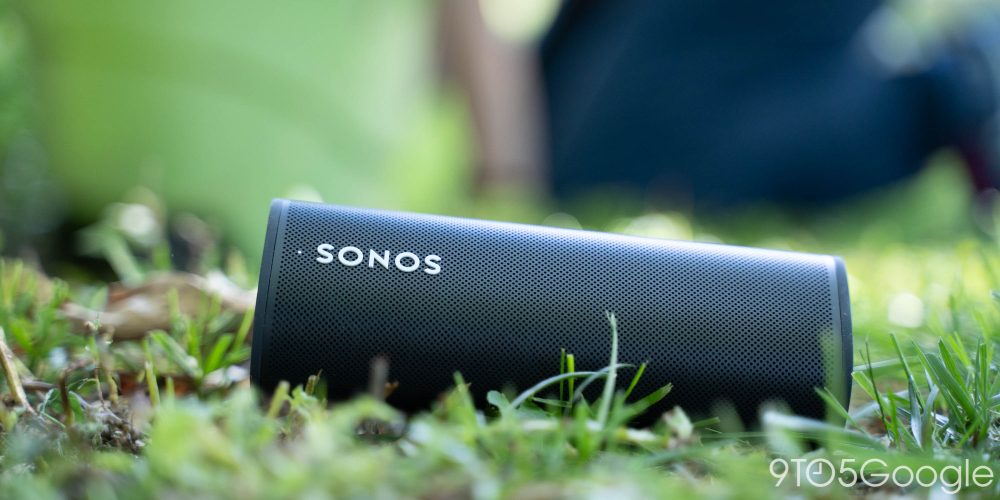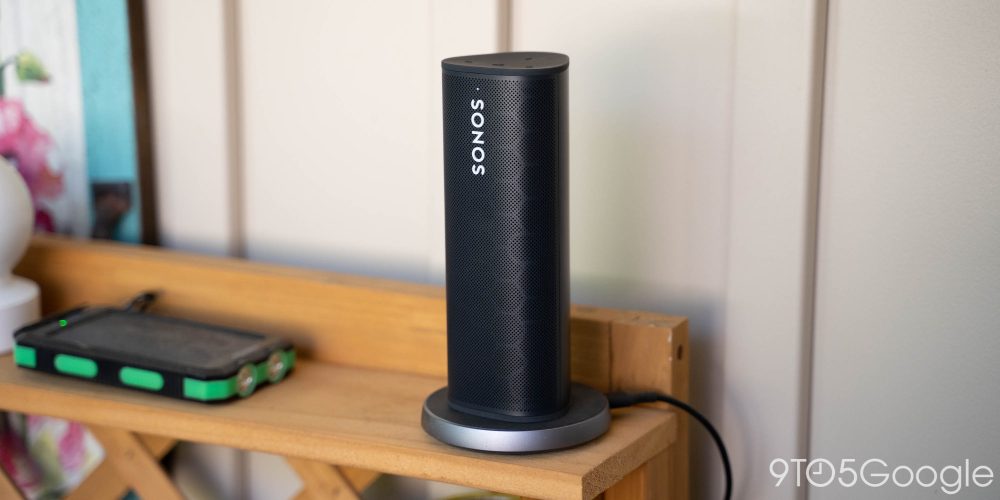
Google Assistant is available on devices of all shapes and sizes, but the vast majority of useful smart speakers that support it are designed to be used in one place, indoors. I’ve been wanting a solution to bring Assistant and, in turn, Chromecast audio around my home wire-free. As it turns out, the Sonos Roam is exactly what I’ve been looking for.
Sonos Roam is battery-powered speaker that connects to Wi-Fi for the primary goal of streaming music. So, let’s start by talking about sound quality.
As you’d expect from the Sonos brand, Roam sounds incredible, especially for its size. The little speaker is tiny enough to go just about anywhere but brings volume that I’d expect from something twice the size. That quality is best heard at or below 50% volume where I found clarity as its best, but if you need to crank up the volume you won’t be disappointed. This thing is great both for a gardening companion and for filling your backyard with music during a BBQ. You can’t expect perfection or even quality that matches the rest of the Sonos lineup, but Roam sounds better than it should for its size, probably helped by the “Auto TruePlay” feature that adjusts the sound based on the environment.
You can play music from the Roam directly through the Sonos app or using Spotify Connect, but it really shines for me because it doubles as a Google Assistant speaker. A quick setup process walks you through linking Sonos Roam to Google Assistant and, afterwards, the product can listen for “Hey Google” commands and act as a target for any app that supports audio over Chromecast. Assistant commands were easily understood by the Roam even from a distance, and I was also happy with how quickly it would respond to those commands, something some third-party devices like this can slightly struggle with. There’s also an easy toggle for the mic if you want added privacy.

There are some restrictions, though, which keep me from calling this the “perfect” portable Google Assistant speaker.
Due to the ongoing Sonos feud about speaker grouping, you can’t pair the Sonos Roam with other Google Assistant speakers around your home to have music playing simultaneously. That was a bummer to find out, as I’d hoped to use the Roam as a portable part of a whole home speaker group on cleaning days or when having friends to my home, but it wasn’t meant to be. Another slight quirk is how Roam is treated within the Google Home app. It appears as a miscellaneous speaker which, unfortunately, means you can’t control volume or tracks playing on the Roam within the Home app’s excellent “Media” section.
Another annoying quirk of Sonos’ messy relationship with Google was that I was required to link Spotify Premium to my Sonos account just to use Google Assistant commands. Annoying, but workable and something I was willing to overlook, given the native Spotify Connect support that Roam carries. Quirks like these are ways Sonos pushes you to use their app, but outside of setup, that’s not something I’ve done. You don’t need to use that app if you just want to add the Roam to your Google Assistant ecosystem. If you want to learn a bit more about how the Roam interacts with other Sonos products, Chris Welch has an excellent overview over at the Verge.




These screenshots were taken while Roam was playing music, but Sonos won’t tell Google about that
Hardware holds up well on this product, too. The design keeps the device small, as mentioned, but it’s also well thought out. The rounded triangle ensures audio goes primarily in one direction while also giving you two orientations to put the Roam down. You can put it down horizontally or vertically, the latter being better for accessing the on-device controls. The entire package is IP-rated for water and dust resistance, too, which is great if you’re going to use it near the pool, on a dusty day, or during the threat of rain. Heck, you could even bring it in the shower if you wanted.
Notably, too, Sonos uses standard Qi wireless charging if you don’t want to use the USB-C cable, something I really appreciated for its grab-and-go nature. I used a third-party charger, though, given the one Sonos sells itself is severely overpriced . Any $10 Qi charger will do just as well.
To round out the experience, battery life is good. I was able to run the speaker for a couple of hours outside working on the yard and washing cars and it didn’t drain down too far, though Sonos did warn of a bug at launch that could cause Google Assistant to drain the battery very quickly. I didn’t observe that, but it could put a damper on the 10-hour claim if you’re affected. Google has already committed to a fix.

Wi-Fi performance was admirable too. I can’t say the Roam manages better connectivity than my smartphones, but it can definitely stretch to the edge of what my Google Wi-Fi system can reach and doesn’t buffer much when it’s at its furthest from the router. You might run into issues on a large property, but as long as your expectations are in check, I doubt you’ll be disappointed. When you are out of Wi-Fi range, you’ll of course lose access to Google Assistant, but you can still use this product as a normal Bluetooth speaker with your smartphone.
For me, Sonos Roam has proven to be the perfect portable speaker for listening to music when I’m not necessarily sitting in the same place. Going forward, I think it’ll be one of the tentpoles of my Google Home ecosystem. However, I can’t ignore the price. $169 is not cheap, and for many, may not be worthwhile. Luckily, there are alternatives. You could pick up a classic Bluetooth speaker and just run off of your phone or get a battery base for Google Home Mini, the original Google Home, or, what I’d consider the best option for sound quality, Nest Mini.
If Sonos Roam is in your budget, it’s shipping now from , , B&H Photo, and other retailers.

Author: Ben Schoon
Source: 9TO5Google



